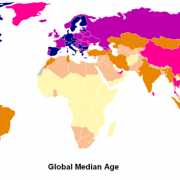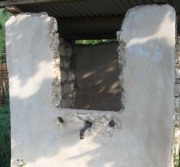Qualcomm’s Wireless Reach mHealth Project to Improve Cardiovascular Disease in Resource Scarce China
Qualcomm’s Wireless Reach™ initiative, the strategic initiative of the wireless chipset manufacturer, has partnered with Life Care Networks and the Community Health Association of China to start a mHealth project focused on improving prevention and care of cardiovascular diseases (CVD) in rural China. The project, Wireless Heart Health, was launched back in September in community health clinics in three provinces (Shandong, Anhui, and Sichuan) and one municipality (Chongqing).
In the past, most mHealth projects in rural areas have focused on acute diseases. These diseases are easier to handle via treatment and/or prevention, which allows for numerous mHealth interventions including appointment and pill reminders as well as data collection and information dissemination. But chronic diseases are becoming a larger public health issue in rapidly developing countries. Within China, CVD is the leading cause of death. By leveraging mobile technology to reach the rural community clinics, patients and health workers in rural areas can be connected directly with trained medical personnel in an urban area. While this type of connection is common in many countries (see MTN CareConnect in South Africa), the level of technology sophistication in this project allows for more in-depth data to be gathered and transferred to trained doctors.
Project Details
Life Care Networks developed a cardiovascular monitoring system that uses China Telecom’s 3G network to send heart data to cardiac specialists, who can provide rapid patient feedback. The system includes an electrocardiogram (ECG) senor on a smartphone, electronic medical record software, and workstations at the community clinics. The ECG-enabled smartphone has a gold rim around the outside part of it which is the senor. The patient simply holds the top and bottom of the phone in order for it to read their heart data. The medical records software is web-based and includes all past data collected in the clinic. This allows for both the community health workers and the doctors in the call center to have access to historical data in order to provide better care to the patients.
Within the project, the community health clinics are connected via the 3G network directly to cardiac specialists in the Beijing Life Care Networks Call Center. Using the ECG sensor along with the software and workstations, the patient data is sent to the call center and allows for real-time feedback either by SMS or voice. The call center is open 24-hours a day, and their services range from monitoring and diagnosis to treatment and referral. Referrals are especially important in these clinics as the clinic staff often do not have the knowledge and expertise to treat complicated cardiovascular issues. Because the smartphone sends the patient information directly to a trained doctor, it allows for referrals to happen swiftly, cutting down the time it usually takes. Also the smartphones are available for patients to rent in order to monitor their cardiovascular information.
Partnership Model
By leveraging a partnership model, Wireless Reach has been able to expand many services into rural or resource scarce areas by working with both for-profit and nonprofit organizations. With the Wireless Heart Health project, Life Care Networks is a for-profit company that has a commercially available ECG monitoring service as well as products and services for personal care. They offer different levels of service, depending on the needs and desires of their clients. The other project partner, the Community Health Association of China, is a nonprofit organization that supports the efforts of the Ministry of Health in helping to strengthen the Community Health Clinics throughout China.
Wireless Reach’s partnership model does not only include bringing together for-profits and nonprofits to strategically work together. An important aspect of all Qualcomm’s Wireless Reach projects is that they tie directly to government policies and initiatives. For example, this project addresses one of the specific issues outlined in the recent 2009 Chinese Health Care Reform, which focuses on strengthening the country’s grassroots medical institutions to provide equitable health care for all citizens.By partnering with Community Health Association of China, Qualcomm is able to engage in a project that supports the Chinese government’s efforts to develop a primary health care system.
Sustainability and Scale
Another important aspect of Wireless Reach projects is the goal for them to sustain as well as reach scale. In some cases, the project and its products/services become commercialized. In other cases, they have been sustained by the relevant country’s government. Since this project is only months old, the long-term model has not been decided yet. But there is a plan to create sustainability in the short-term and answers the age old question of “who pays?” In the model, patients are charged a small fee to its patients to rent the specialized phone. This allows the clinics to generate revenue and creates incentives to actively use the products and services.
Current Results
As mentioned before, each of Qualcomm’s Wireless Reach projects are focused on reaching sustainability and increasing scale. For this project, Wireless Reach is focused on gathering information and creating best practices in order to keep the project sustainable and eventually scale up. New impact data has recently been received and ranges from September 2011 to the end of January.
- 46 community health clinic doctors have been trained on how to use the system.
- A total of 1033 patients have participated in the project.
- These patients have sent 2172 pieces ECG data.
- Out of that data, 513 pieces were identified as abnormal.
- Out of all of the patient participants, 208 were screened for serious cardiovascular conditions and referred to higher-level clinics for further evaluation and testing.
Wireless Heart Health is an interesting example of how creating strategic partnerships, utilizing current technology and infrastructure (both telecommunications and health), and tying the project goals to current government policies can create a sustainable and scalable mobile health model.
Please also find below a video of the project:









































